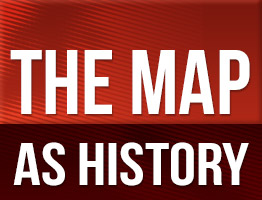This map is part of a series of 5 animated maps showing .
▶ View series: Independence for Spanish American colonies
SubscribeThe first phase of independence
This map is part of a series of 5 animated maps showing the history of Independence for Spanish American colonies.
The process of independence in Spanish America was initiated as a result of the arrival of Napoleon’s troops in Spain and the power vacuum caused by the abdication of kings Charles IV and Ferdinand VII.
The formation of a central junta that encouraged the Cortes of Cádiz to enact a liberal constitution did not solve the problems in America.
The Spanish Central Junta was wary of the American juntas established in its image and granted them only limited representation in the Cortes. In 1810, this mistrust and the discontent of certain Creole elites led some juntas to declare independence and seek help from the United Kingdom and the United States. The rebels saw themselves as patriots while those loyal to the Crown were identified as royalists.
In 1810, the May Revolution in Buenos Aires resulted in the removal of the viceroy and the establishment of a junta. The United Provinces of the Río de la Plata officially remained loyal to the king but acted independently.
The authorities in Buenos Aires attempted to control the former territories of the vice-royalty, such as Upper Peru, Paraguay and the Banda Oriental, but failed. In 1811, Paraguay declared its independence from the Spanish crown and from Buenos Aires, and chose Gaspar Rodríguez as its ruler with the title of dictator for life.
In the vice-royalty of New Spain, on 16 September 1810, the priest Miguel Hidalgo launched the ‘Grito de Dolores’, a call to revolt against the authorities. At the head of an army of indigenous people and mestizos, Hidalgo fought both the Spanish-born ‘peninsulares’ and the Creoles. However, he gave up the idea of entering Mexico City and was eventually defeated by royalist troops and shot in 1811.
Then another priest, José María Morelos, assumed leadership of the revolt and proclaimed independence, but he was also defeated and shot in 1815.
In Venezuela, a rebellion led by Francisco de Miranda and Simón Bolívar broke out in 1811 but was defeated the following year.
In early 1813, during the ‘Admirable Campaign,’ Bolívar marched from Colombia to Caracas, but José Tomás Boves, a royalist officer, mobilized the lower classes in the interior of Venezuela against the Creole independence fighters and forced Bolívar to retreat. During these clashes, both sides carried out mass executions.
In the United Provinces of New Granada, several juntas declared independence in 1810 and 1811: Quito, Cartagena, while Santa Fe de Bogotá founded the Free State of Cundinamarca in 1811. Cundinamarca was ruled by Antonio Nariño, translator of the French Revolution’s Declaration of the Rights of Man.
Nevertheless, in 1814, Ferdinand VII returned to power and sent an army of 10,000 men to take control of the rebel juntas, which enjoyed only limited support. Consequently, royal power was restored in almost all of the colonies, but the seeds of independence immediately resurfaced with renewed vigour.
